Quick Read
Planning Your Seed-to-Harvest Garden: A Comprehensive Step-by-Step Guide
Starting a seed-to-harvest garden is an exciting and rewarding experience. It not only allows you to grow your own fresh produce, but also gives you a deeper connection with nature. However, planning is key to ensuring a successful garden. In this comprehensive step-by-step guide, we will discuss the essential steps to planning and growing a seed-to-harvest garden.
Step 1: Choose the Right Location
Selecting the right location for your garden is crucial. Sunlight, soil conditions, and access to water are essential factors to consider. Most vegetables require at least 6 hours of direct sunlight each day. Soil tests should be conducted to determine its pH level, nutrient content, and drainage properties. If necessary, amend the soil with compost or other organic matter.
Pro Tip:
South-facing gardens usually receive the most sunlight, making them ideal for growing vegetables.
Step 2: Plan Your Garden Layout
Planning your garden layout involves deciding on the types and quantities of vegetables to grow. Consider your family’s food preferences, cooking habits, and storage capabilities when making these decisions. Remember to allow adequate space between plants for proper growth. Use a garden planner or square foot gardening method to help design your garden layout.
Pro Tip:
Companion planting is a great way to enhance the productivity and health of your garden by strategically pairing certain plants together.
Step 3: Prepare Your Garden Bed
Preparing your garden bed involves removing any unwanted debris, weeds, or rocks. Tilling the soil loosens it and allows for better water absorption and root growth. Apply a mulch layer to help maintain soil moisture, suppress weeds, and provide insulation.
Pro Tip:
Avoid walking on garden beds whenever possible to prevent compacting the soil.
Step 4: Start Planting
Starting your plants from seeds or seedlings depends on the specific vegetables you plan to grow. Direct sowing into the garden is best for cool-season crops like lettuce, radishes, and carrots, while warm-season crops like tomatoes, peppers, and eggplants usually require starting from seedlings indoors or purchasing transplants.
Pro Tip:
Follow the planting instructions on the seed packets or seedling labels for optimal growth.
Step 5: Maintain Your Garden
Regularly maintaining your garden is essential to ensure a bountiful harvest. Watering, fertilizing, and weeding are crucial tasks. Using natural pest control methods can help protect your crops from harmful insects and diseases.
Pro Tip:
A consistent watering schedule helps maintain soil moisture and supports strong plant growth.
By following these steps, you’ll be well on your way to planning and growing a successful seed-to-harvest garden. Happy gardening!
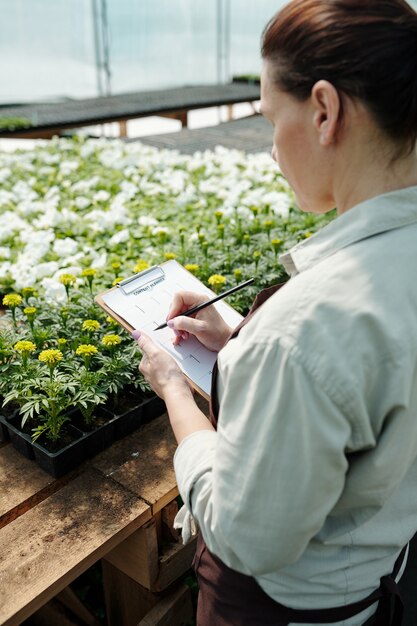
Planning is Key to a Successful Seed-to-Harvest Garden
Planning is an essential aspect of starting a seed-to-harvest garden. This meticulous process sets the foundation for a bountiful, productive, and sustainable vegetable garden. By carefully planning your garden layout, considering the climate, soil conditions, sunlight availability, and crop selection, you are increasing your chances of a successful growing season. In this comprehensive guide
Understanding the Importance of Planning
Planning is crucial for several reasons, starting with maximizing space. When you meticulously plan your garden design and arrange crops accordingly, you’ll make the most of every square inch. Additionally, thoughtful planning can help you minimize pest and disease issues, as well as prevent crop overlap and ensure proper companion planting. Furthermore, planning allows you to align your garden with seasonal changes, enabling you to make the most of each season’s unique growing conditions.
What to Expect from this Guide
In the following sections, we will delve deeper into the various aspects of planning a seed-to-harvest garden. We’ll explore how to:
- Select the right garden design for your space and growing conditions.
- Understand soil tests and amendments
- Plan the perfect crop rotation
- Learn about companion planting and pest management
Armed with this knowledge, you’ll be well on your way to a thriving seed-to-harvest garden that will provide you and your family with fresh produce all year round.
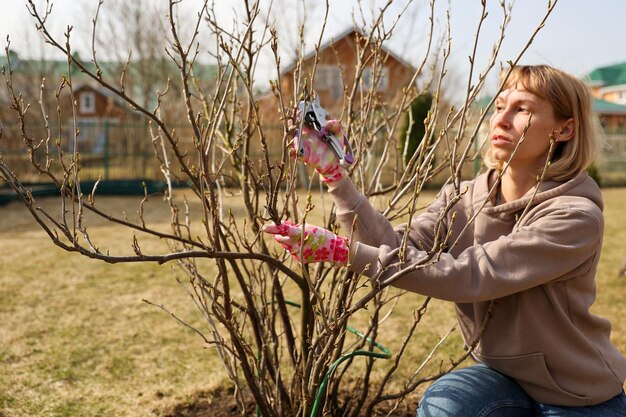
Understanding Your Site and Climate
Assessing your garden’s location
Determining the right location for your garden is crucial to its success. Consider the following factors:
Sunlight:
Understand the sunlight requirements of various crops and find a spot that suits them best. For instance, tomatoes thrive in full sun (6 hours or more), while shade-loving plants like lettuce and ferns prefer partial shade.
Wind exposure:
Evaluate the wind patterns in your area and consider windbreaks, such as trees or hedges, to protect sensitive plants from damage. Sheltered areas usually offer better growing conditions.
Water availability:
Assess your water sources and determine the best irrigation methods for your garden. Rainwater collection, drip irrigation, or overhead sprinklers can all be viable options depending on your location and climate.
Familiarizing yourself with your local climate and growing season
Understanding your region’s climate will help you choose the right crops and planting times. Consider these factors:
Average temperatures:
Identify your area’s average high and low temperatures throughout the year to determine which plants are best suited for growth in your region.
Frost dates:
Know the frost dates in your area to plan for the appropriate planting times of frost-sensitive crops. Frost blankets or row covers can be used to protect plants when necessary.
Rainfall patterns:
Analyze historical rainfall data to help you determine the right irrigation methods and water storage solutions for your garden. This information will also help you decide which crops are best suited to your region based on their water requirements.
Adjusting your garden plan according to site and climate conditions
Once you have a clear understanding of your site and climate, it’s time to make adjustments to your garden plan accordingly. This might include:
Choosing crops that thrive in your conditions:
Select crops that grow well in your sunlight, wind exposure, and water availability conditions.
Planning for the growing season:
Plan your garden layout to make the most of the sunlight and optimize your planting times based on frost dates.
Implementing irrigation methods:
Choose the best irrigation method for your garden based on rainfall patterns and water availability, such as drip irrigation or rainwater collection.
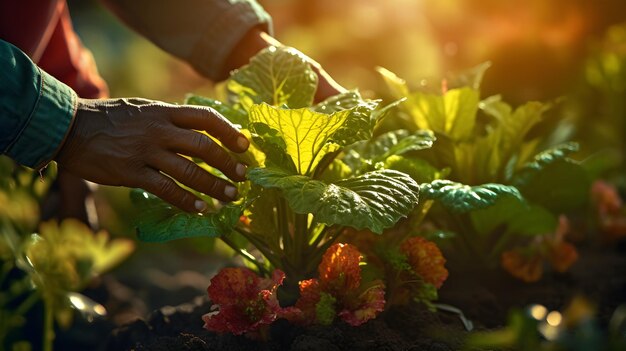
I Choosing the Right Crops for Your Garden
Choosing the right crops for your garden is an essential aspect of successful gardening. Understanding some fundamental concepts, such as planting zones, growth requirements, and companion planting, will significantly increase your chances of a bountiful harvest.
Understanding the basics
Planting zones, determined by your geographical location, indicate which plants will thrive in your area. Check your USDA hardiness zone to select crops that are well-suited to your climate. Growth requirements, including sun exposure, soil pH, and moisture levels, must also be considered when deciding which crops to plant.
Companion planting
Companion planting, an age-old agricultural practice, involves growing specific crops together to improve growth and deter pests. Popular combinations include corn, beans, and squash (the Three Sisters) or tomatoes with basil for pest control and improved flavor.
Selecting crops based on site, climate, and personal preferences
Vegetables: Choose vegetables that grow well in your climate. Cool-season crops like broccoli, carrots, and lettuce thrive in colder weather, while warm-season vegetables such as tomatoes, peppers, and corn require sunny conditions. Personal preferences will also influence your vegetable selection – consider growing those you frequently use in cooking.
Fruits
Fruits: Fruit trees and shrubs are long-term investments. Select fruits that grow well in your area and climate, such as apples, peaches, or figs, depending on your planting zone. Personal preferences also play a role – consider growing fruits you enjoy eating fresh, preserving, or using in recipes.
Herbs
Herbs: Growing herbs is an excellent way to add flavor and nutrition to your meals. Many herbs, like basil, parsley, and cilantro, are easy to grow in various conditions. Others, such as rosemary, thrive in hotter climates or well-drained soil. Choose herbs based on your climate and personal preferences for cooking and tea blending.
Planning a diverse and sustainable garden
Planning a diverse and sustainable garden involves growing both annual and perennial crops, as well as implementing rotation strategies. Annual crops, like tomatoes and lettuce, are planted each growing season, while perennial crops, such as fruit trees or raspberry bushes, provide multiple harvests over several years. Rotation crops involve planting different types of crops in the same area each season to maintain soil health and prevent disease buildup.
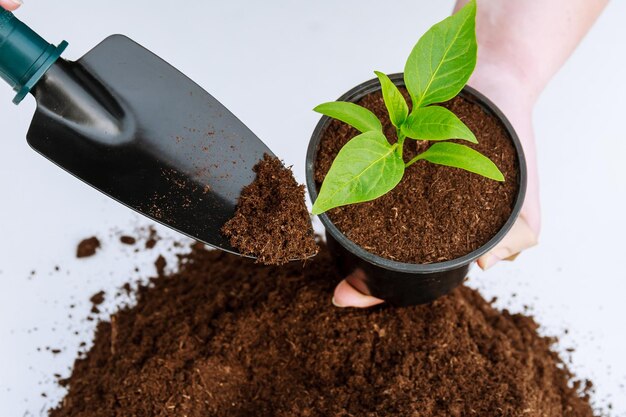
Preparing Your Garden Soil
Preparing your garden soil is an essential step in creating a thriving and productive vegetable garden. Properly preparing the soil can lead to better plant growth, increased yields, and healthier crops. Here are some key steps to prepare your garden soil:
Testing your soil for pH levels and nutrient content
Before planting, it’s important to test the soil in your garden to determine its pH levels and nutrient content. pH is a measure of the acidity or alkalinity of soil, and it can greatly affect the availability of nutrients to plants. Nutrient content, on the other hand, refers to the amount of essential minerals and elements present in the soil that are necessary for plant growth.
Interpreting the results of a soil test
A soil test kit can be purchased from your local gardening supply store or online. Follow the instructions carefully to take a sample of your soil and send it in for analysis. Once you receive the results, pay close attention to the pH level and nutrient content. Generally, most vegetable gardens prefer a slightly acidic soil with a pH between 6.0 and 7.0.
Amending your soil based on the results
Based on the results of your soil test, you may need to amend your soil to adjust its pH level or add nutrients. For example, if your soil is too acidic, you can add lime to raise the pH level. If it’s too alkaline, you can add sulfur. To add nutrients, you can apply organic fertilizers like compost or well-rotted manure.
Enriching your garden soil through organic methods
Organic methods of enriching your garden soil are not only good for the environment, but they can also improve soil health and fertility. Here are some effective methods:
Building a compost pile or using store-bought compost
Compost
is a nutrient-rich organic matter that can be made at home by composting kitchen and yard waste. Alternatively, you can purchase store-bought compost from your local gardening supply store. Compost improves soil structure, increases water retention, and adds essential nutrients.
Planting cover crops to improve soil health and fertility
Cover crops
are crops that are planted specifically to cover the soil during the fallow season. They protect the soil from erosion, add organic matter to the soil, and improve its structure and fertility. Popular cover crops include clover, rye, oats, and vetch.
Choosing the right tools and techniques for working with your garden soil
Working with garden soil requires the right tools and techniques to ensure optimal results. Here are some considerations:
Choosing the right gardening tools for working with your soil
Gardening tools
can make the task of preparing and maintaining your garden soil easier. Consider using a shovel for digging, a rake for breaking up clumps and smoothing out the surface, and a rototiller for large gardens. For smaller gardens or raised beds, consider using hand tools like a garden fork, trowel, or bulb planter.
Practicing good gardening techniques for maintaining your soil
Good gardening techniques can help you maintain healthy garden soil. These include: adding mulch to retain moisture and suppress weeds, practicing crop rotation to prevent the depletion of soil nutrients, and using proper watering techniques to avoid overwatering or under-watering.

Setting Up a Garden Layout and Design
Planning your garden layout to maximize space, sun exposure, and accessibility
- Creating raised beds or using container gardens: Raised beds and container gardens are great solutions for maximizing space and improving soil quality. Consider the size, shape, and location of your raised beds or containers to ensure they receive adequate sunlight.
- Designing a square foot garden or row gardening: Both methods offer efficient use of space and easy maintenance. A square foot garden allows for planting different crops in each square foot, while row gardening focuses on long, narrow beds that make it easier to tend to the plants.
Setting up your garden infrastructure, such as trellises, cages, and supports
- Choosing the right materials for your garden structures: Consider factors such as cost, durability, and weight capacity when selecting materials. Common choices include wood, metal, and plastic.
- Building or purchasing trellises, cages, and other supports: Proper infrastructure can help prevent plant damage, improve yield, and enhance the overall appearance of your garden.
Establishing a watering system for your garden, including irrigation and rainwater collection
- Setting up an automatic irrigation system: This can save time and ensure consistent watering for your plants. Consider factors such as the size of your garden, plant types, and weather conditions when designing your irrigation system.
- Collecting and storing rainwater for gardening use: Rainwater collection is an eco-friendly way to provide water for your garden. Install rain barrels or other containers to collect and store rainwater, then use it to water your plants.

VI. Starting Seeds: Indoors or Directly in the Garden
Deciding whether to start seeds indoors or plant them directly in the garden:
- Advantages and disadvantages of each method:
Starting seeds indoors or directly in the garden both have their pros and cons. Indoor seed starting offers several advantages, such as:
- Control over growing conditions, including temperature and moisture levels;
- Earlier harvest since seedlings get a head start on the growing season;
- Ability to grow specific plants not typically found in local gardens.
On the downside, indoor seed starting requires more time and resources for setting up containers, soil, lighting, and watering. Conversely, direct seeding in the garden allows seeds to germinate and grow naturally under outdoor conditions, providing benefits like:
- Reduced transplant shock;
- Lower resource usage;
- Direct contact with soil microbes, which can support plant health.
However, direct seeding may not be suitable for all crops or climate conditions.
Preparing for seed starting indoors:
- Choosing containers, soil, and lighting:
Selecting appropriate containers for seed starting:
Choose shallow, well-draining containers with good moisture retention. Containers should be made of non-toxic materials like peat pots or plastic.
Choosing the right soil mixture:
Use a high-quality seed starting mix that is light, well-draining, and rich in nutrients. Avoid garden soil as it can contain pests, disease, or excessive nutrient levels that might harm seedlings.
Providing proper lighting for seedlings:
Most indoor spaces don’t provide adequate natural light for seedlings, so supplemental artificial light is necessary. Set up a grow light system above the seeds to ensure they receive 14-16 hours of light each day.
Directly sowing seeds in the garden:
- Understanding when to sow certain crops directly in the garden:
Choosing the best sowing method for your garden conditions:
Some crops thrive when directly sown in the garden, while others may require indoor starting or transplanting. Consider your local climate and seasonal conditions to determine which method is best for each crop. For example, warm-season crops like tomatoes, peppers, and cucumbers typically perform better when started indoors and transplanted later, while cool-season crops like broccoli, carrots, and lettuce are often sown directly in the garden.

V Maintaining Your Seed-to-Harvest Garden
Maintaining a seed-to-harvest garden requires dedication and consistent efforts to ensure optimal growth, flavor, and nutrition. Here are some essential practices for maintaining your garden:
Developing a regular maintenance schedule
Watering:
Establish a watering routine to keep your plants healthy and hydrated. This may include watering daily or every other day, depending on the weather conditions and specific crop needs. Ensure that you’re watering deeply to encourage strong root growth and reduce the need for frequent watering.
Weeding:
Remove weeds regularly to prevent competition for resources and keep your garden healthy. Hand-pulling is an effective method, especially when weeds are young. You can also use mulch or landscaping fabric to minimize the need for frequent weeding.
Pest Control:
Implement natural pest control methods to protect your garden from damage caused by pests. Some effective techniques include companion planting, which is the practice of growing complementary plants together to repel pests and improve growth, and using organic pesticides made from natural ingredients like neem oil or garlic.
Harvesting your garden crops at the right time
Knowing when to harvest:
Harvest your garden crops at the right time for optimal flavor and nutrition. Each fruit, vegetable, or herb has its unique harvesting window. For instance, tomatoes are best picked when they’ve reached their full color but before they start to soften and overripen. Consult gardening resources or your seed packets for specific harvesting guidelines.
Properly storing garden produce:
Properly store your garden produce to preserve its freshness and extend its shelf life. Some fruits and vegetables require special storage conditions to maintain their quality, such as cool temperatures or humidity control. Follow best practices for storing each crop type to maximize its longevity.
Preserving your garden harvest
Choosing the best preservation method:
Choose the best preservation method for each crop based on its specific characteristics and your personal preferences. Some crops are best suited for canning, while others may be better preserved through freezing or dehydration.
Safe food handling practices:
Follow safe food handling practices throughout the preservation process to ensure a successful outcome and maintain food safety. This includes sanitizing equipment, properly preparing produce, and following recommended processing times and temperatures.
Example:
Canning: Peaches are delicious preserved through canning. Choose ripe, but not overripe fruit, blanch in boiling water, and pack into sterilized jars with sugar syrup. Process in a water bath for 25 minutes to ensure a sealed jar.
Conclusion
Maintaining a seed-to-harvest garden involves regular care and attention, from creating a maintenance schedule to harvesting and preserving your produce. By following best practices for watering, weeding, pest control, harvesting at the right time, and preserving your crops, you’ll enjoy a bountiful harvest with optimal flavor and nutrition throughout the year.
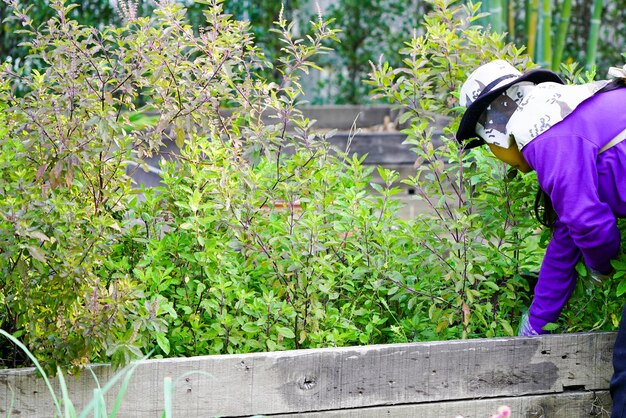
VI Troubleshooting Common Garden Problems
Gardening is a rewarding hobby, but it can also come with its fair share of challenges. Identifying and addressing common garden problems such as diseases, pests, and nutrient deficiencies is crucial for maintaining a healthy and productive garden.
Identifying and addressing common garden problems
Recognizing signs of common garden diseases: Be on the lookout for telltale signs of disease, such as discoloration, spots, wilting, or stunted growth. Some common garden diseases include powdery mildew, downy mildew, and black spot. Understanding the causes of these diseases – such as excessive moisture or poor air circulation – can help prevent future occurrences.
Powdery Mildew: Recognizable by white powdery spots on leaves and stems, this fungal disease thrives in humid conditions.
Downy Mildew: Identified by yellow or brown spots with a fuzzy growth on the underside of leaves, this disease is most common in cool, moist conditions.
Black Spot: Characterized by black spots on leaves and stems with yellow halos, this fungal disease is typically found in humid conditions.
Implementing natural solutions for managing pests and nutrient deficiencies: Instead of reaching for synthetic chemicals, consider using natural methods for dealing with garden issues. For instance, introduce beneficial insects to combat pests or use organic fertilizers to address nutrient deficiencies.
Taking preventative measures to minimize potential garden problems
Choosing disease-resistant varieties of plants: Many plant varieties have natural resistance to common diseases, making them a wise choice for gardeners. Consult with local experts or research plant options to find disease-resistant alternatives.
Companion Planting
Practicing crop rotation and companion planting to improve soil health and prevent pest infestations: Crop rotation involves growing different types of crops in the same area each year, allowing the soil to recover from the specific demands of each crop. Companion planting refers to growing certain plants together that benefit one another – for example, marigolds are known to repel nematodes and improve tomato growth.

IX. Conclusion
Recapping the key steps of planning, planting, and maintaining a successful seed-to-harvest garden:
Choosing the right location and planning your garden layout
Selecting appropriate plants for your climate and personal preferences
Preparing the soil with compost, mulch, and other amendments
Starting seeds indoors or directly sowing in the garden
Providing adequate water, sunlight, and nutrients for your plants
Managing pests and diseases naturally
Harvesting your produce at the right time
Preserving and preparing your harvest for future use
Encouraging readers to continue learning and experimenting with new gardening techniques and strategies:
Gardening is a lifelong journey of discovery, and there is always more to learn! Don’t be afraid to experiment with new techniques and strategies, such as companion planting, container gardening, or Square Foot Gardening. Join a local gardening club or community garden to connect with other gardeners and learn from their experiences. And never stop asking questions – the more you know, the more successful your garden will be.
Offering resources for further information:
Books:
Some recommended gardening books include “The Vegetable Gardener’s Bible” by Edward Smith, “The Square Foot Garden Method: The Original Guide to Maximum Yield in Minimum Space” by Mel Bartholomew, and “Raised Bed Gardening: The Complete Guide with 340 Full-Color Photographs” by Roger Doiron.
Websites:
Check out websites like link, link, and link for a wealth of gardening information and tips.
Gardening Organizations:
Consider joining organizations like the American Horticultural Society, the National Garden Bureau, or your local Master Gardener program to stay up-to-date on the latest gardening trends and research.
Happy gardening!




